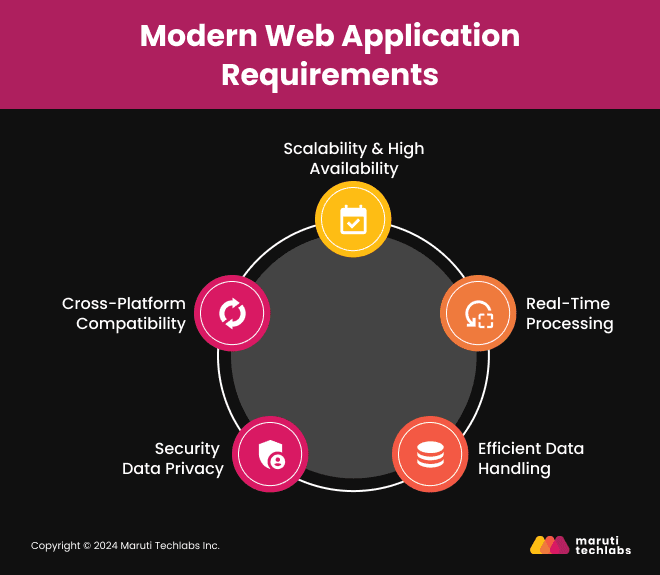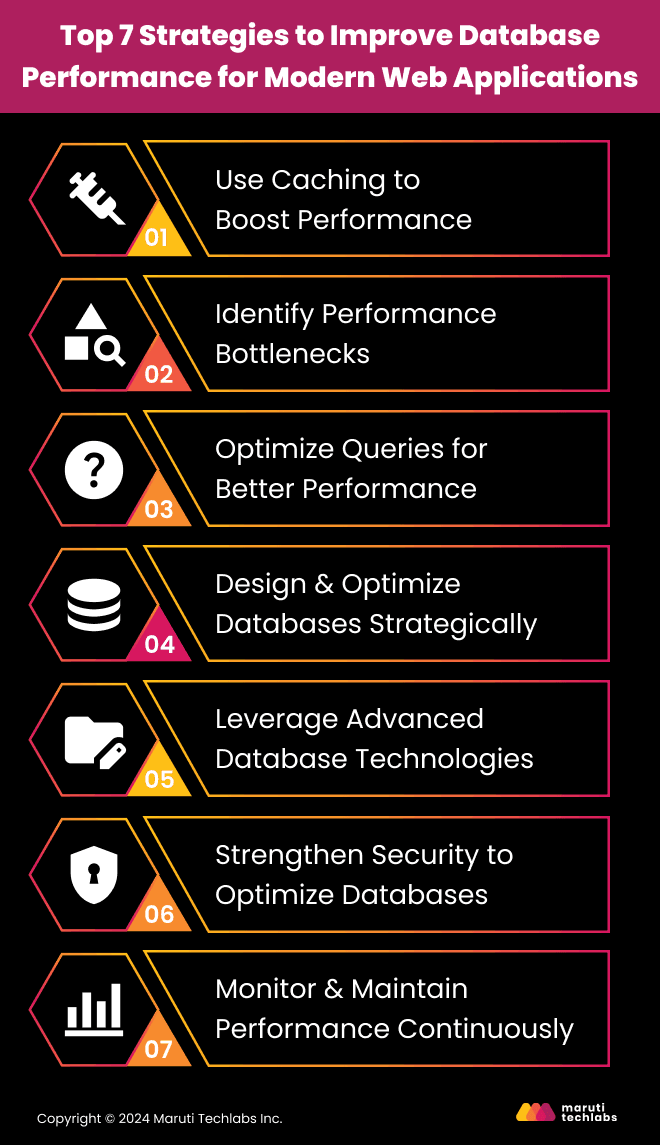

How to Improve Database Speed: 7 Proven Methods for Modern Web Applications






The performance of an application’s database is vital for ensuring smooth and efficient operations. A slow or unresponsive database can lead to user frustration and potential loss of engagement, negatively impacting your business. Just as a well-maintained engine ensures optimal performance on the track, an optimized database keeps your application running efficiently, minimizing delays and buffering.
Following certain strategies is essential to ensure smooth and efficient application operations. In this guide, we’ll explore 7 proven strategies to improve database performance, and you can make your modern web application more efficient and deliver a better user experience.
The database is the backbone of any modern web application. Its performance directly affects how fast and efficiently an application operates.
Before diving into the strategies, let’s understand why optimizing database performance is critical:
Modern web applications accommodate multiple functionalities while giving users a smooth experience. For this, they must have specific requirements:

To meet these demands and ensure smooth user experiences, it's essential to implement strategies that boost database performance.
Improving database performance is important for a website to run smoothly, but it’s not always as simple as flipping a switch. Many businesses face challenges like slow queries, data bottlenecks, or poor system design, leading to frustrated users and missed opportunities. These problems aren’t just technical—they can impact your business’s bottom line, harming customer trust and your ability to scale.

Here are 7 effective strategies for enhancing database performance to overcome these challenges.
Implementing caching helps reduce the load on your database, as frequently accessed data temporarily exists in memory. It fetches data quickly and helps with faster response.
There are a variety of common caching strategies. The In-memory caching technique stores data in the system's RAM for rapid access, while the distributed caching technique spreads the data across multiple servers, improving scalability and reliability. The caching strategy depends on specific application requirements and typical usage patterns.
Regularly monitoring your database will help you identify what is hindering your database performance. You can use query analyzers and performance monitors to help identify slow-running queries, inefficient indexing, or resource constraints. By analyzing query execution time, CPU usage, and memory consumption, you may apply targeted optimization techniques to enhance overall performance.
Writing efficient SQL queries is the foundation of database performance. Avoiding unnecessary complexity, such as too many joins or subqueries, and ensuring that queries are appropriately indexed lead to major performance gains. Using query execution plans can help one understand how a query is being executed so that refinements can be made for optimization.
A good database schema is crucial for optimal performance. Depending on your application's needs, balancing normalization and denormalization reduces redundancy and enhances data integrity. Proper indexing strategy and data partitioning can make queries faster and more manageable.
Staying abreast of technological advancements in the database field will improve performance. For unstructured data, options such as NoSQL databases or using cloud solutions for scalability have immense benefits for any application that may require prediction through machine learning algorithms. Therefore, one must find a balance in assessing the need from an application standpoint.
Strong security controls should not be compromised while optimizing for performance. These controls should ensure data integrity in optimization processes, proper access control, and optimal trade-offs between speed and security. Encryption, regular audits, and best practices will ensure your database is safe without sacrificing performance.
Database optimization is a continuous process that needs constant monitoring and maintenance. Automated monitoring solutions can help in real-time performance metrics, thus preventing issues from arising. Regular maintenance schedules, including index rebuilding and statistics updates, ensure the database remains efficient and reliable.
A well-optimized database will provide long-term benefits such as improved user satisfaction, seamless scalability, and better resource management. As web applications grow and evolve, these optimizations become essential for maintaining high performance under increasing traffic and data demands.
Looking ahead, the future of database performance will likely involve greater reliance on AI-driven optimizations, real-time data processing, and the integration of advanced storage technologies. Adopting these trends will help businesses stay competitive and deliver better user experiences.
Slow or unresponsive databases can affect the performance of your web application as well as customer satisfaction. At Maruti Techlabs, a web development company in New York, we provide tailored software solutions that enhance database performance for a flawless user experience. From query optimization to improving caching techniques and implementing advanced database technologies, we’re here to assist.
Reach out today to discuss how we can boost your application’s performance for better business outcomes!
Monitoring your database performance regularly, ideally in real time, is important to identify any issues quickly. Implement automated monitoring solutions that track key metrics like query execution time, CPU usage, and memory consumption.
Caching temporarily reduces load by storing frequently accessed data in memory. While it speeds up data retrieval and reduces database load, it should be used strategically. For example, caching works well for static data, but dynamic data may require frequent refreshes for accuracy.
Optimizing your SQL queries is a foundational step in improving database performance. Avoiding complex joins and well-indexed and simplified queries can speed up their execution. Query optimization is vital for faster data retrieval and reducing database strain.
They excel at handling large amounts of unstructured or semi-structured data. Their flexible schema and scalability make them a great choice for applications that require fast data processing, real-time analytics, or big data handling. Thus, they improve performance in scenarios where traditional relational databases may struggle.
Partitioning divides a database into smaller, more manageable segments, helping queries to run on specific partitions rather than the entire database. This reduces query response time and improves overall performance, especially for large datasets.


